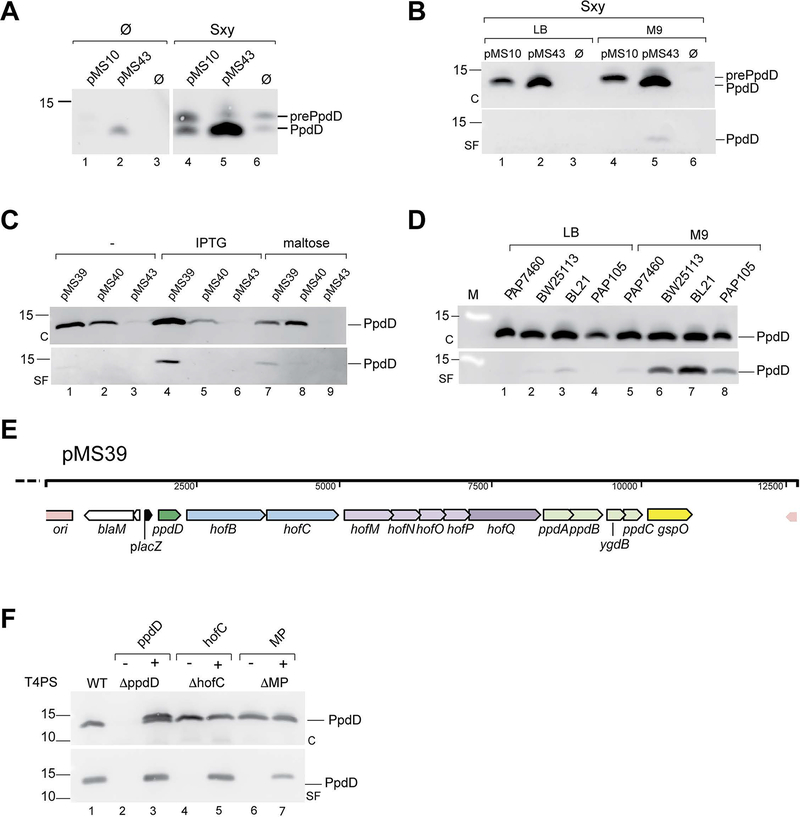Figure 3.
Construction, optimization and complementation analysis of the synthetic ppd-hof operon. A, The Sxy-mediated induction of ppdD expression in E. coli strain PAP7460 carrying pMS10, pMS43 and pBR322, without (Ø) or with sxy gene on plasmid pCHAP8746. Total extracts from 0.15 OD600nm of bacteria cultured on LB plates containing IPTG for 48 hours were analysed by SDS-PAGE and immunodetection using anti-PpdD antibodies (1:1000); B, Bacteria of strain PAP7460 containing plasmid pCHAP8746 and either pMS10, pMS43 or vector pBR322 (Ø) cultured on LB or M9-glycerol media for 48 hours. Pilus assembly was assayed as described in Experimental procedures. C, cell fraction; SF, sheared fraction; M, molecular weight marker. C, Construct optimization. Pilus assembly in strain PAP7460 containing plasmid pMS43, compared with optimized constructs pMS39 and pMS40 cultured in LB (−) or LB containing IPTG or maltose as inducers. D, Pilus assembly in indicated E. coli host strains transformed with plasmid pMS39 and cultured on selective LB or M9 glycerol plates containing IPTG. E, Linear map of the pMS39 construct with an artificial ppd-hof operon under placZ control. Gene names are indicated and colour-coded corresponding to the scheme in Fig. 1A. F, PpdD pilus assembly in pMS39 (WT) and its deletion derivatives lacking ppdD (pMS41), hofC (pMS47) and minor pilin (MP) ppdAB-ygdB-ppdC genes (pMS45). Strain BW25113 F’lacIQ containing complementing plasmids (+) of empty vector (−) were grown on selective M9 glycerol plates containing IPTG. In Panels B, C and F samples of cell (C) and sheared fractions (SF) from 0.05 OD600nm equivalents were analysed by SDS-PAGE and immunoblot with anti-PpdD antibodies diluted 1:2000.

